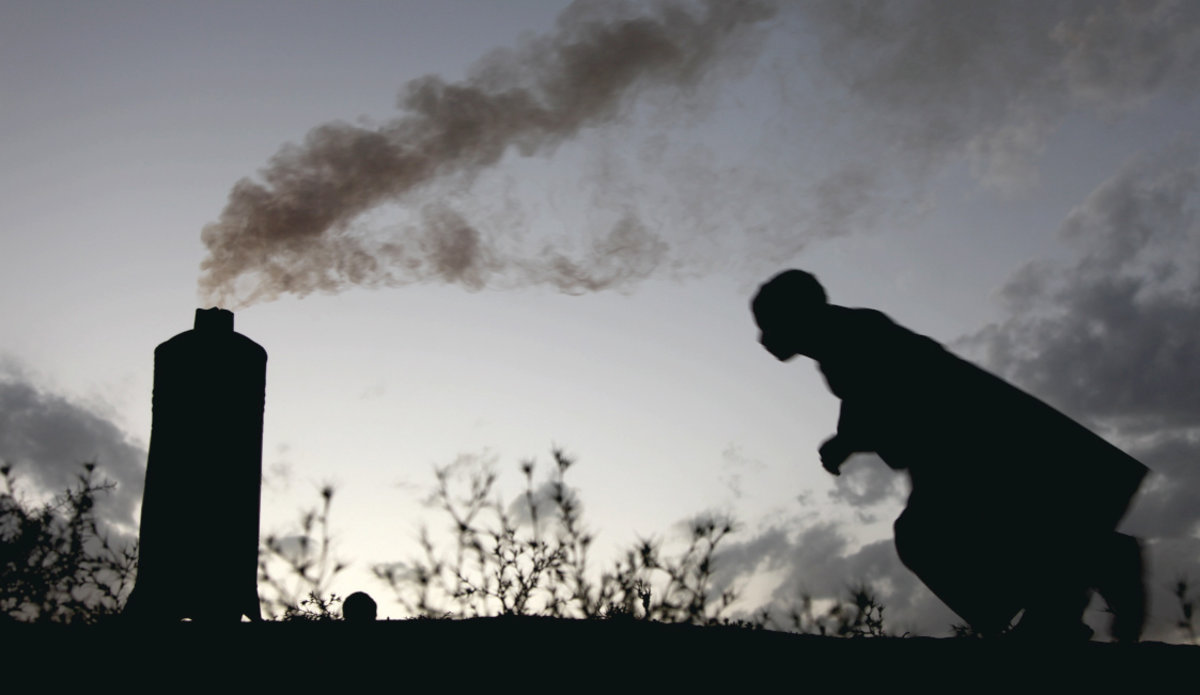Steps taken to fight pollution in Afghanistan capital
with a significant rise in the number of people moving to the Afghan capital in recent years, Kabul residents have been breathing increasingly polluted air caused by vehicle emissions, diesel generator fumes and the smoke from the dozens of brick-making kilns situated on the city’s outskirts. In winter, Kabul’s pollution worsens, as people burn wood, coal and oil to warm their residences and offices.
Studies report that the pollutants in Kabul’s air are mainly coming from the approximately one million vehicles moving around the city, with a majority of them using substandard fuel. In addition, to deal with a less-than-stable power infrastructure, Kabul residents have been relying more heavily on diesel generators in recent years. According to the National Environment Protection Agency (NEPA), some 50,000 generators were active during winter this year in Kabul, compared to 11,000 last year.
The most dangerous pollutants, however, come from the dozens of industrial brick-making kilns on the outskirts of the city. They burn tires, wood, coal and used oil to produce bricks for Afghanistan’s expanding construction industry.
Environmental experts say these pollutants are leading to many ailments for Kabul’s residents. “We know that a lot of breathing-related sicknesses have become common in Kabul,” said Andrew Scanlon, the Director of the United Nations Environment Programme (UNEP) in Afghanistan, noting that reports of respiratory diseases have increased more than 1,000 per cent since 2002.
On the legislative side, the Government, with the technical assistance of UNEP, developed an environmental law with very clear articles on air pollution. According to NEPA, the use of wood and coal has dramatically decreased as a result of the legislation and related efforts, with one notable development being that most bakeries in Kabul have switched from wood to natural gas for their ovens.
The Deputy Director General of NEPA, Ghulam Mohammad Malikyar, explains that a high-level Government commission on environmental issues now meets every month to assess the situation and issue directives. He explains that liquid petroleum gas (LPG) is quickly becoming a success story as an alternative to petrol and diesel for vehicles, with 30 per cent of the automobiles in Afghan cities already having switched to LPG from petrol.
“I would say that LPG has probably halved the increase in pollution in Kabul over the last three years, and that was done only with Afghan investment, without any foreign support,” says Mr. Scanlon. “LPG is less expensive and it has only H2O emissions, giving off carbon dioxide in water, which is much less harmful than all the sulfur that we are getting from the diesel.”
In addition to these and other efforts, municipalities across Afghanistan have prepared short- and long-term plans to put concrete and asphalt over dirt roads, a process that is expected to reduce air pollution by some 15 per cent. “Also, we are trying to improve electricity supply to the cities, which will reduce the use of solid fuel material and result in better air quality,” says Mr. Malikyar.
Beyond these efforts, experts cite the need for the Government, especially at the local level, to devise better public transport and encourage the private sector to invest. “There is profit to be made by the private sector in public transport, and a very successful public transport system is definitely part of the answer,” says Mr. Scanlon. “If there is money to be made in being green, then you will find the business investors will take the chance.”
 UN
UN







